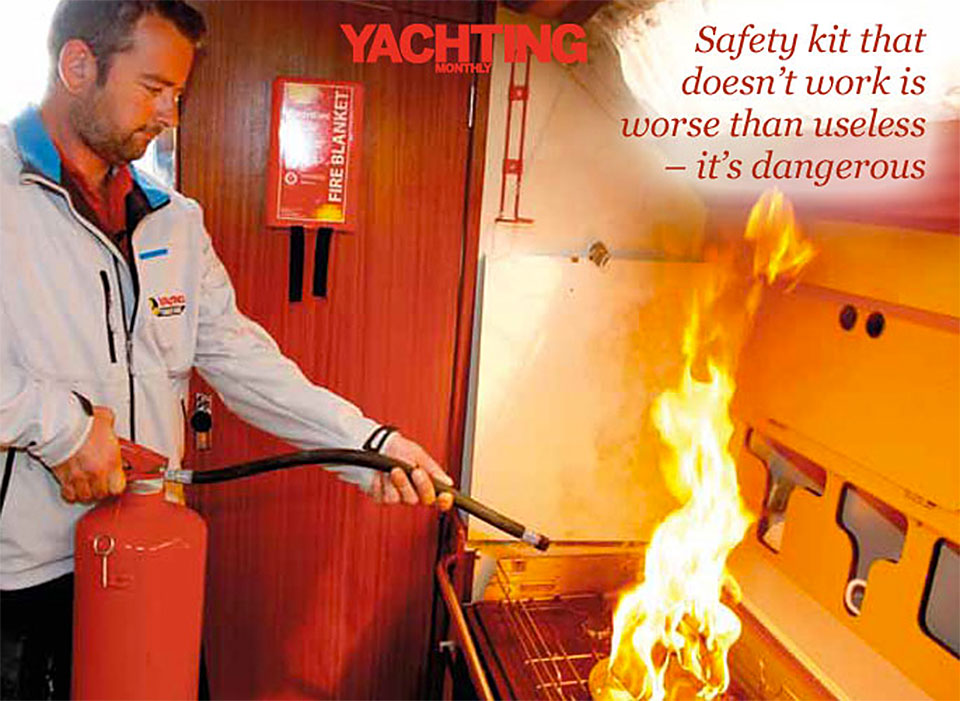In association with Admiral Boat Insurance, Yachting Monthly created a series of potential disasters to find out if all the theories of how to deal with such situations actually work in practice. The boat used in the crash test is Admiral’s own 1982 Jeanneau Sun Fizz ketch, Fizzical.

The Crash Test Team wanted to start fires in the galley and engine room and extinguish them using the boat’s existing equipment, all of which was out-of-date and needed servicing. To gain an insight into the dangers involved, they decided not to use special fire-retardant clothing, gloves or eye protection. The video below shows what happened…
In 2010 the RNLI was launched to 120 fires on boats. Fire can be started by a galley stove, engine, heater, lamp, faulty electrical equipment and other things besides. At sea where it is generally winder than on the land fire spreads quickly. A GRP hull is flammable as is the wooden interior and the foam and fabric furnishings. It could be a death trap!
The team carried out several tests. Putting out a pan fire in the galley the team used a fire blanket rather than an extinguisher which can spread the fat . A toast fire was used to demonstrate using a foam extinguisher. The boat’s foam extinguisher was out of date and didn’t work, emphasising the importance of keeping fire fighting equipment up to date. A powder extinguisher was used on it instead with better results. More ambitiously an engine room fire was set up and brought under control. Many lessons were learnt. Sending a mayday as soon as there is any doubt whether the fire can be controlled is important. It can always be cancelled later. Prevention, of course, including installing alarms and regular maintenance should be carried out.
To read the full article, see the November 2011 issue of Yachting Monthly below.
Crash Test Boat Fire
Robert Holbrook, MD Admiral Marine

“Often, the first natural human instinct when an emergency or disaster strikes is panic. In a series of controlled experiments, the Yachting Monthly crew put theory to the test by re-enacting some typical worst-case scenario sailing accidents or emergencies – such as grounding, capsize and mast failure. Risk assessment and careful consultation with experts was at the core of all tests. How often are incidents like this photographed and filmed in detail? By sharing their findings in a series of articles, I could see how yachtsmen could learn much invaluable information. Why not learn from our mistakes by following her story so you can avoid making your own?”
All Yacht Monthly articles are available in full
Download the full, unabridged Yachting Monthly articles in PDF format below for reading at your leisure.
What to do When your Yacht Run Aground: Yachting Monthly Article (PDF)
Dismasting: Yachting Monthly Article (PDF)
Capsizing: Yachting Monthly Article (PDF)



